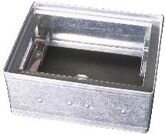andybaker
Feeling the Heat
I see this thread has veered off from circulating warm air, but to get back to that I had this issue big time for a while til someone on here helped me. I have a 2000 sq. ft. house with the fireplace in the back family room at the far end. Hallway in the center of house leading to the stairway going upstairs near the front door. I wanted to get warm air upstairs to the bedrooms. I put an air duct in the ceiling by the hall in the family room and off set the hole above it with a small fan between floors to push warm air upstairs hallway. It worked ok but not as great as I hoped. I did for several years til I wrote something on here about it once. Someone told me that it is much easier to move cold heavier air than to move warm lighter air. So, I reversed the fan between floors and it made a huge difference. By forcing cooler air into the family room it forces warmer air to offset that into the hallway and from there it naturally flows upstairs.


 (61
(61 ) I got the fire going again, and got the cat up to temp. Closed the damper and waited for the temp to start climbing. Outside temp was -17
) I got the fire going again, and got the cat up to temp. Closed the damper and waited for the temp to start climbing. Outside temp was -17 Above the doors in the stove room, and inline fan under the stairs... The list goes on. I probably will not do any of those just yet, just keep playing with the fan placement and adjusting stove temps.
Above the doors in the stove room, and inline fan under the stairs... The list goes on. I probably will not do any of those just yet, just keep playing with the fan placement and adjusting stove temps.
